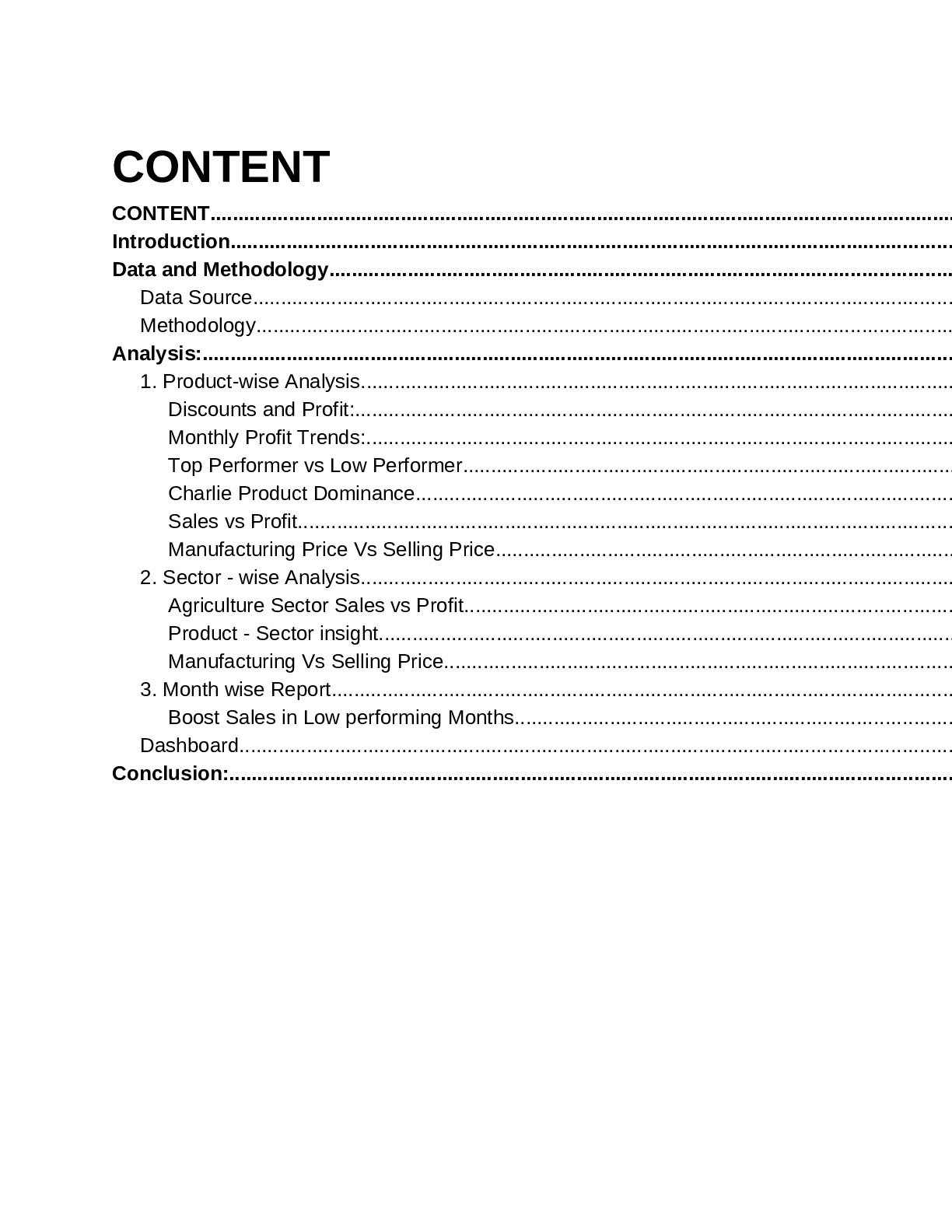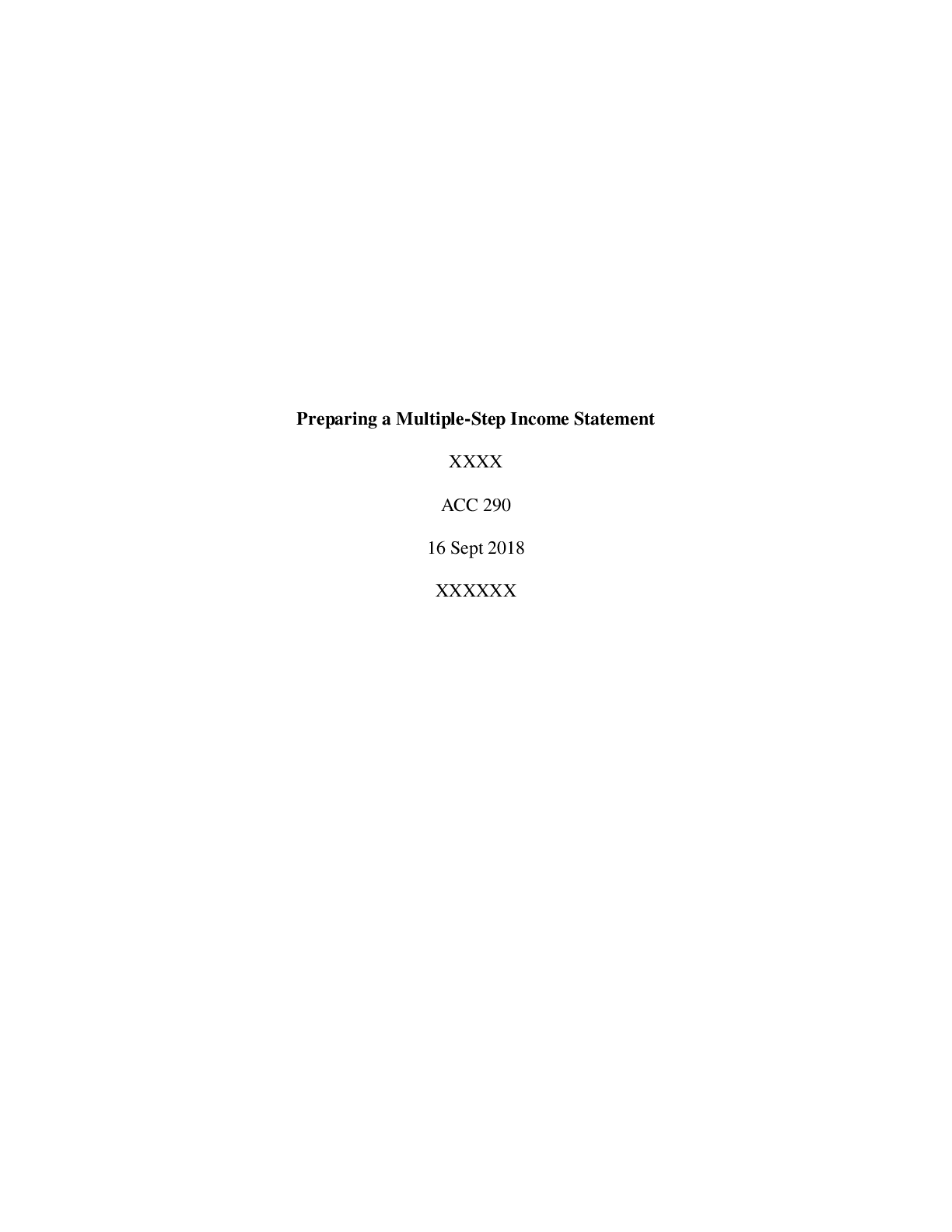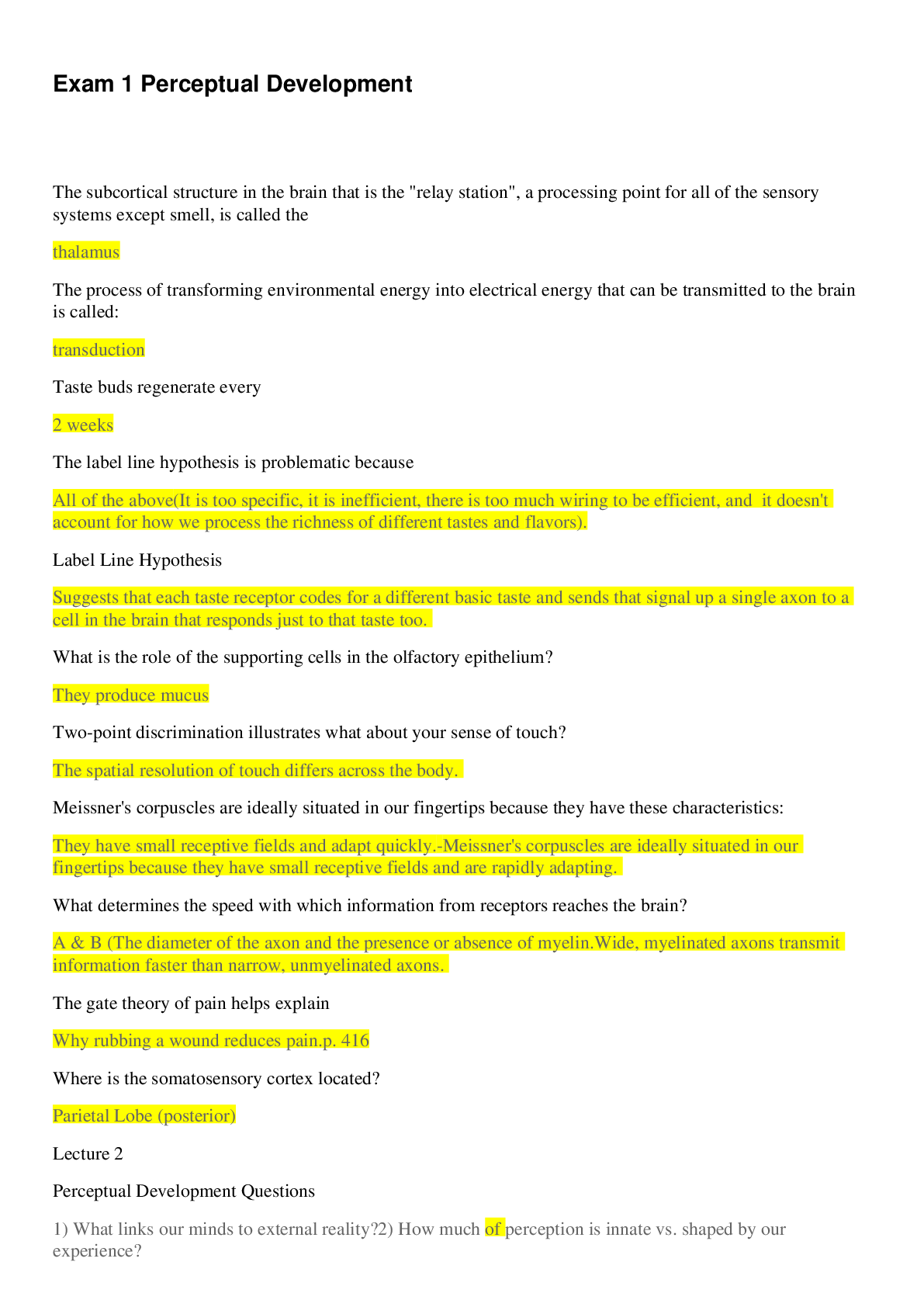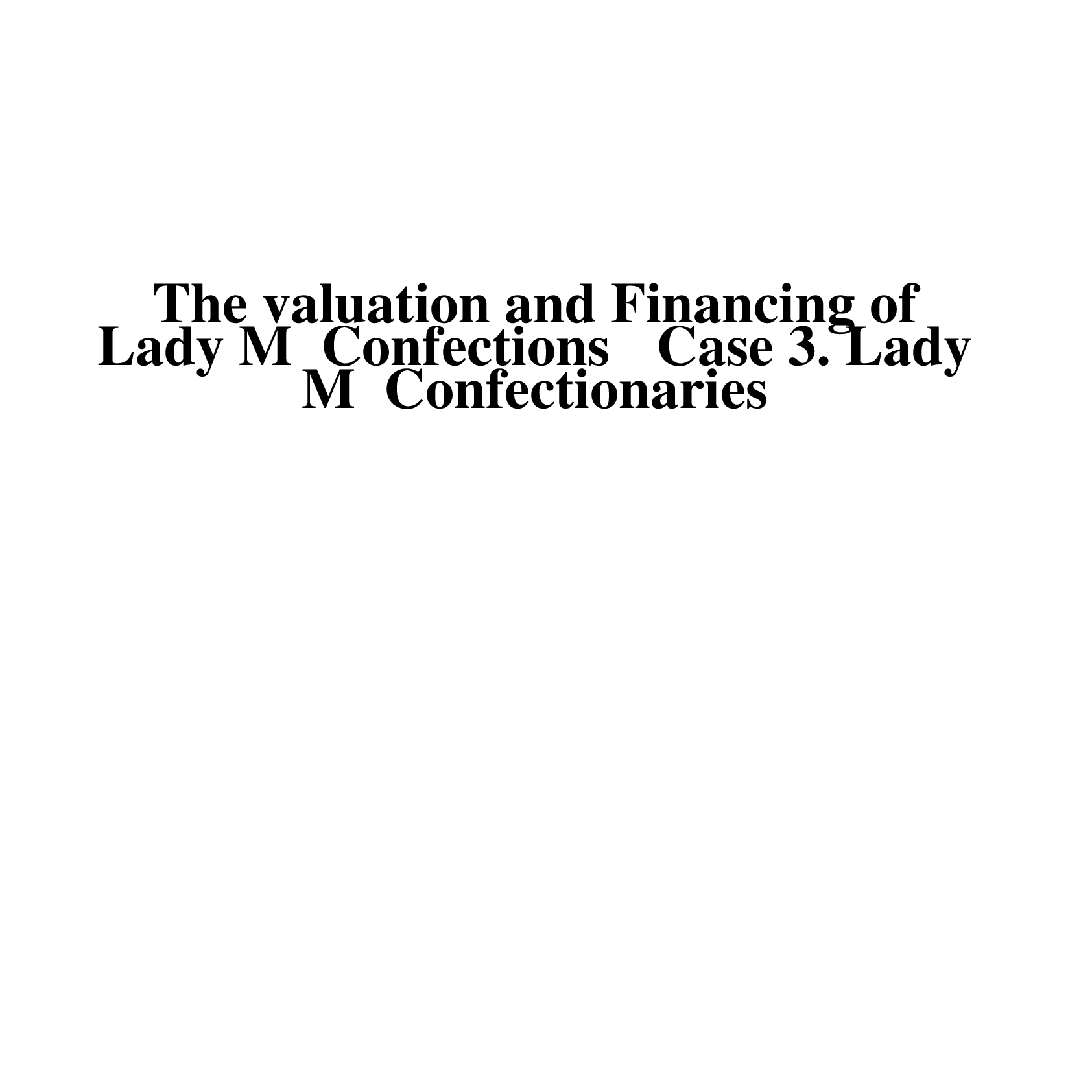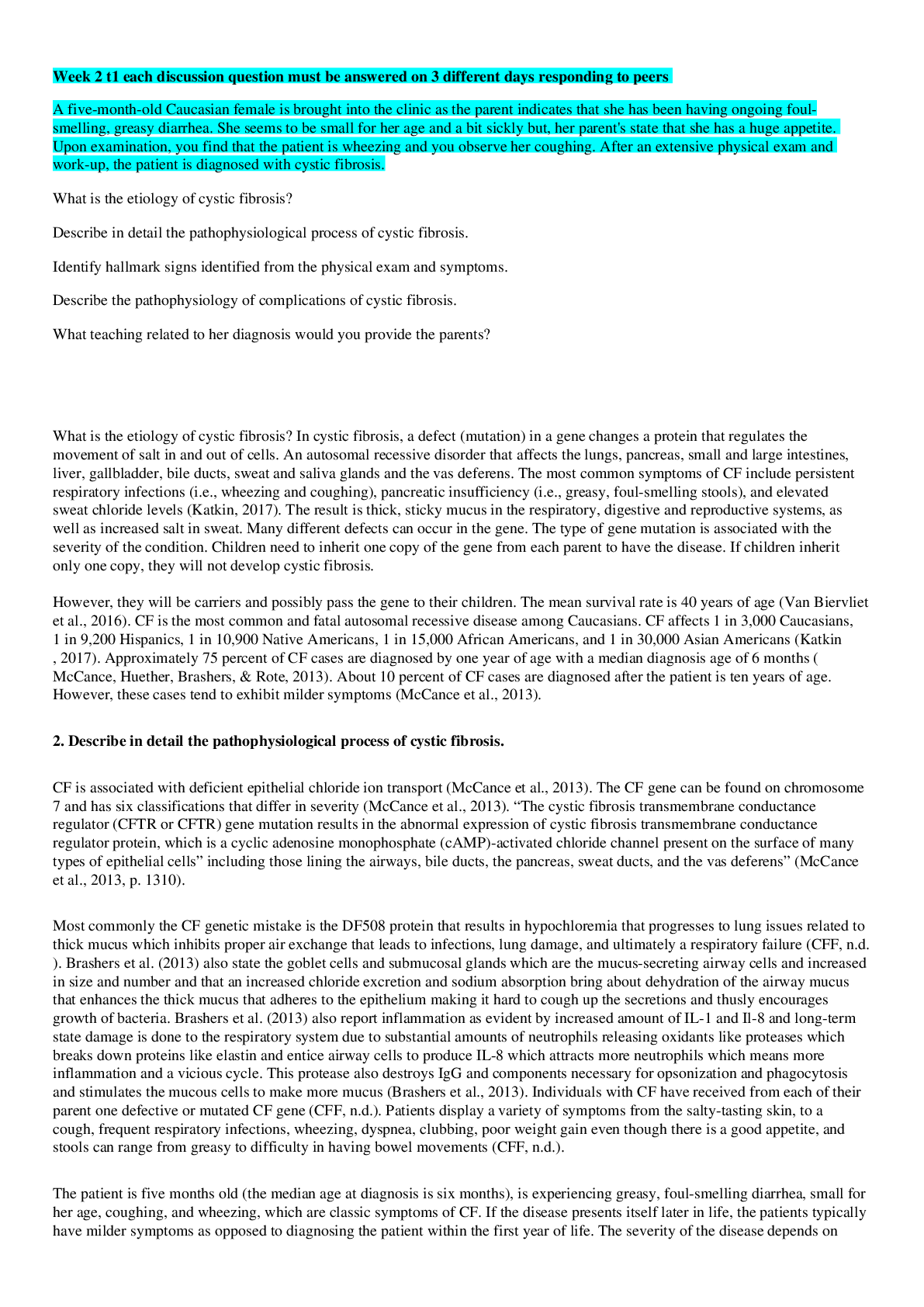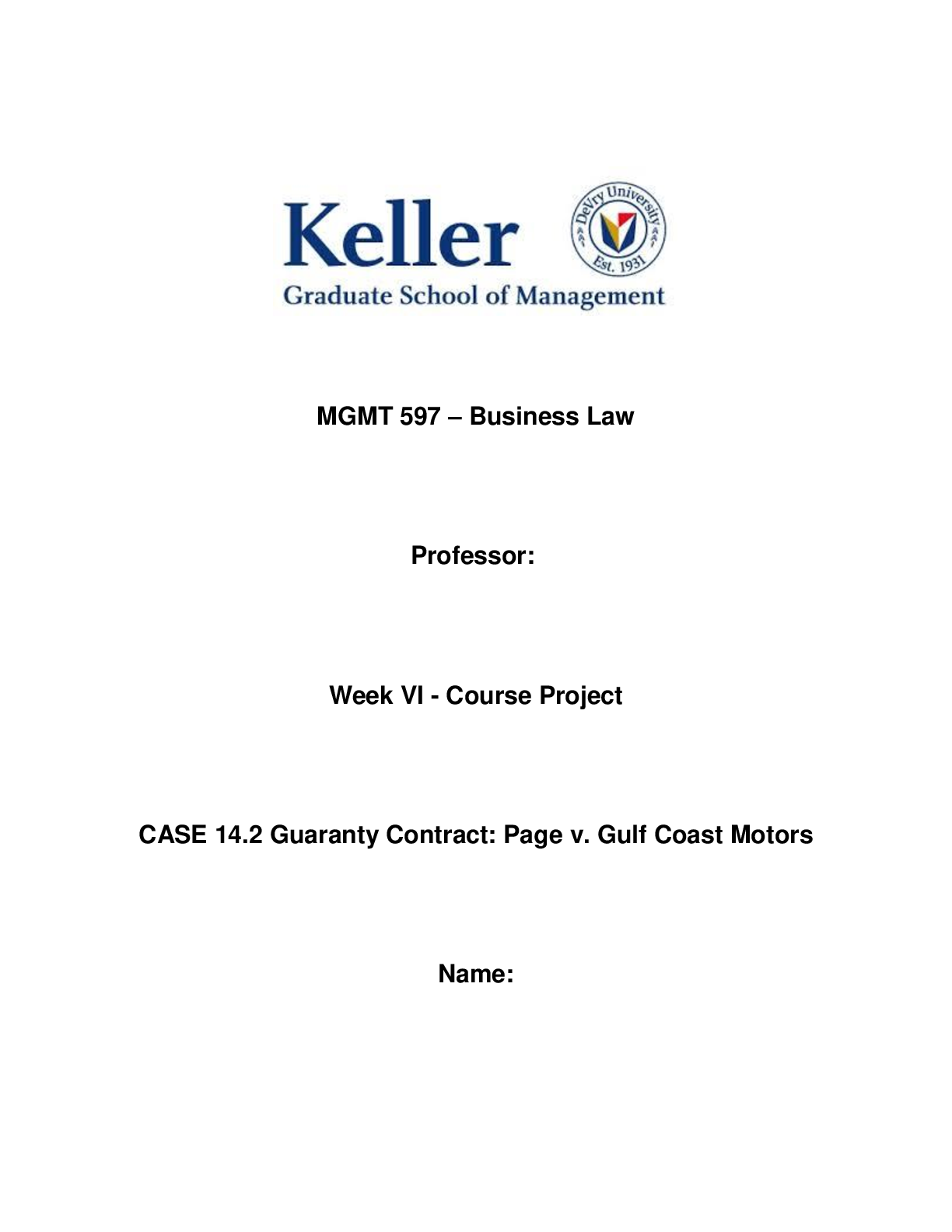*NURSING > CASE STUDY > KENNETH bronson-vsim-for-nursing-medical-surgical-kenneth-bronson-pneumonia-severe-reaction-to-antib (All)
KENNETH bronson-vsim-for-nursing-medical-surgical-kenneth-bronson-pneumonia-severe-reaction-to-antibiotic-answered (1)_removed
Document Content and Description Below
You identified the patient. To maintain patient safety, it is important that you quickly identify the patient. 0:32 You asked if the patient was allergic to anything. He replied: 'No, I am not aller... gic to anything.' 0:37 You looked for normal breathing. He is breathing at 18 breaths per minute. The chest is moving normally on both sides. 1:06 You attached the pulse oximeter. It is a good idea to monitor the saturation and pulse here. This will allow you to reassess the patient continuously. 1:10 Patient status - ECG: Sinus rhythm. Heart rate: 97. Pulse: Present. Blood pressure: 138/83 mm Hg. Respiration: 18. Conscious state: Appropriate. SpO2: 95%. Temp: 103 F (39.2 C) 1:18 You checked the radial pulse. The pulse is strong, 100 per minute and regular. It is correct to assess the patient's vital signs. 1:45 You measured the blood pressure at 136/82 mm Hg. It is appropriate to monitor the patient by measuring the blood pressure. 2:10 Patient status - ECG: Sinus rhythm. Heart rate: 97. Pulse: Present. Blood pressure: 135/81 mm Hg. Respiration: 17. Conscious state: Appropriate. SpO2: 95%. Temp: 103 F (39.2 C) 2:20 You listened to the lungs of the patient. There are reduced breath sounds at the right lung base. 2:41 You assessed the patient's IV. The site had no redness, swelling, infiltration, bleeding, or drainage. The dressing was dry and intact. This is correct. Assessing any IVs the patient has is always important. You should consider measuring the temperature of the patient at this point as part of checking the vital signs. You should have assessed the pain level. 2:58 You started infusing ceftriaxone. This is part of the correct treatment of this condition, and you typically infuse this over 30 minutes. It is important to use the basic rights of medication administration to ensure proper drug therapy.. 2:58 The patient started developing an allergic reaction to the antibiotic. 3:10 Patient status - ECG: Sinus rhythm. Heart rate: 97. Pulse: Present. Blood pressure: 139/83 mm Hg. Respiration: 17. Conscious state: Appropriate. SpO2: 95%. Temp: 102 F (39.2 C) 3:14 You stopped infusing ceftriaxone. Correct. It is very important to stop any infusions when an anaphylactic reaction has developed. 3:31 You started assisting a patient who was breathing. You were able to provide sufficient ventilation. 3:56 You phoned the provider in order to discuss the patient. 4:02 The ventilation rate was 6. Continued hypoventilation may be harmful to the patient. https://www.coursehero.com/file/4995183P 5a /K tie e nn nt ets ht -a Bt ru on sso -nE pdC f/G: Sinus tachycardia. Heart rate: 114. Pulse: Present. Blood pressure: simserver.wkhpe.com/debriefing/debrief.aspx?dss=http%3A%2F%2Fsso.wkhpe.com%2FDebriefingLog%2FSingle%3Fid%3D6d0ce041-837c-4c6f-aa… 2/3 Stuvia.com - The Marketplace to Buy and Sell your Study Material 7/27/2019 Feedback Log & Score — Kenneth Bronson Mar 22, 2018 8:59 PM 4:10 133/75 mm Hg. Respiration: 19. Conscious state: Appropriate. SpO2: 96%. Temp: 102 F ( [Show More]
Last updated: 2 years ago
Preview 1 out of 3 pages
_removed.png)
Buy this document to get the full access instantly
Instant Download Access after purchase
Buy NowInstant download
We Accept:

Reviews( 0 )
$9.50
Can't find what you want? Try our AI powered Search
Document information
Connected school, study & course
About the document
Uploaded On
May 04, 2021
Number of pages
3
Written in
Additional information
This document has been written for:
Uploaded
May 04, 2021
Downloads
0
Views
67

.png)
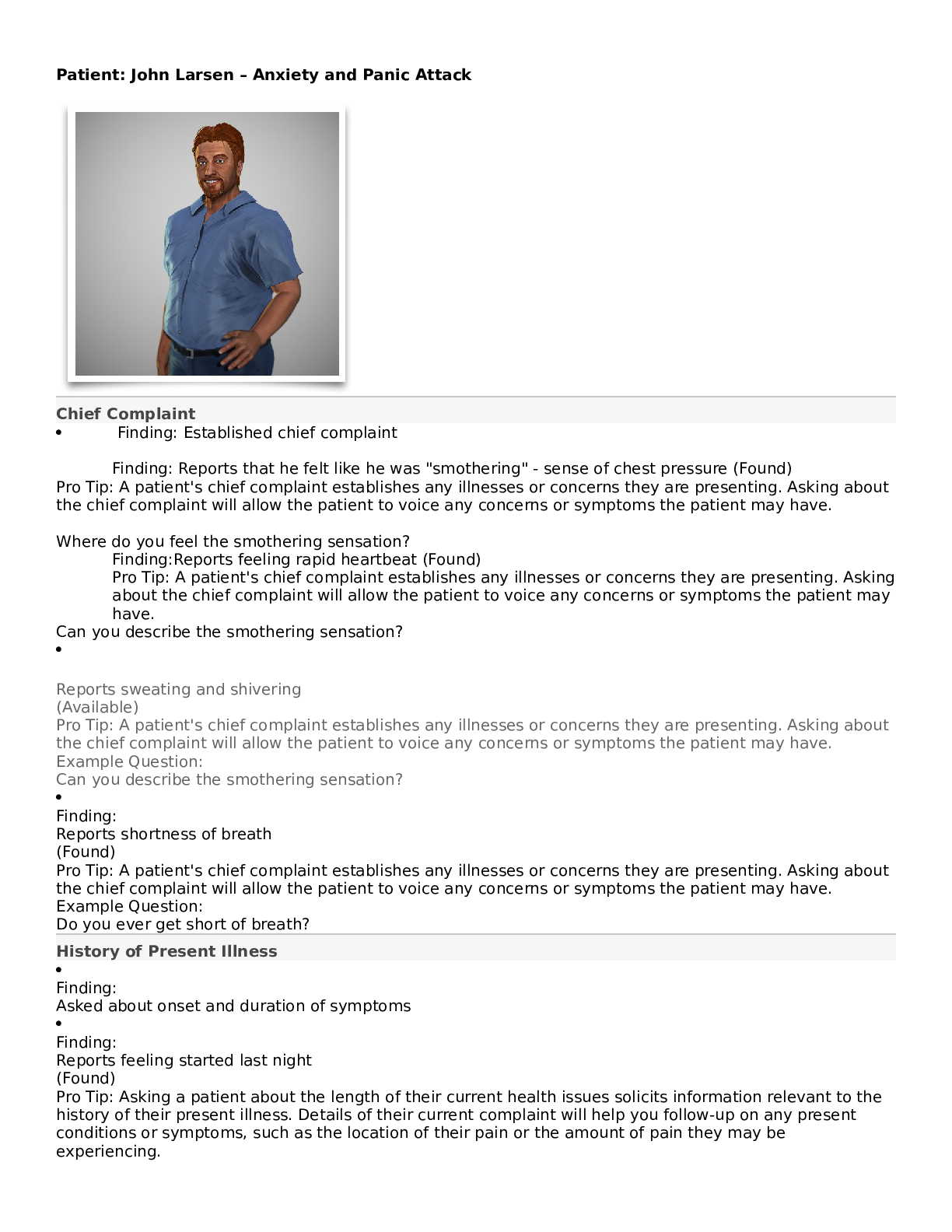


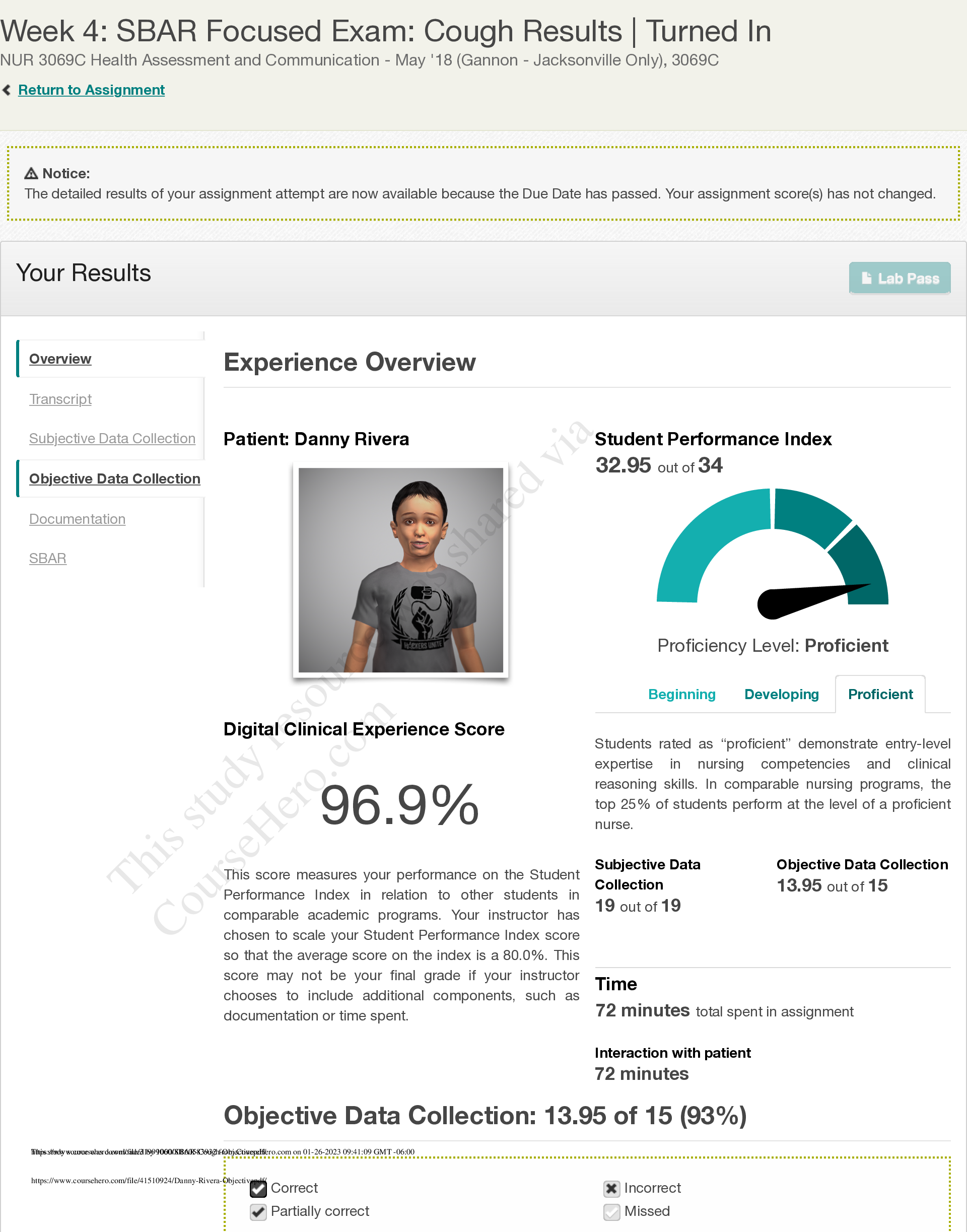


_removed.png)
_removed.png)
_removed.png)
_removed.png)
